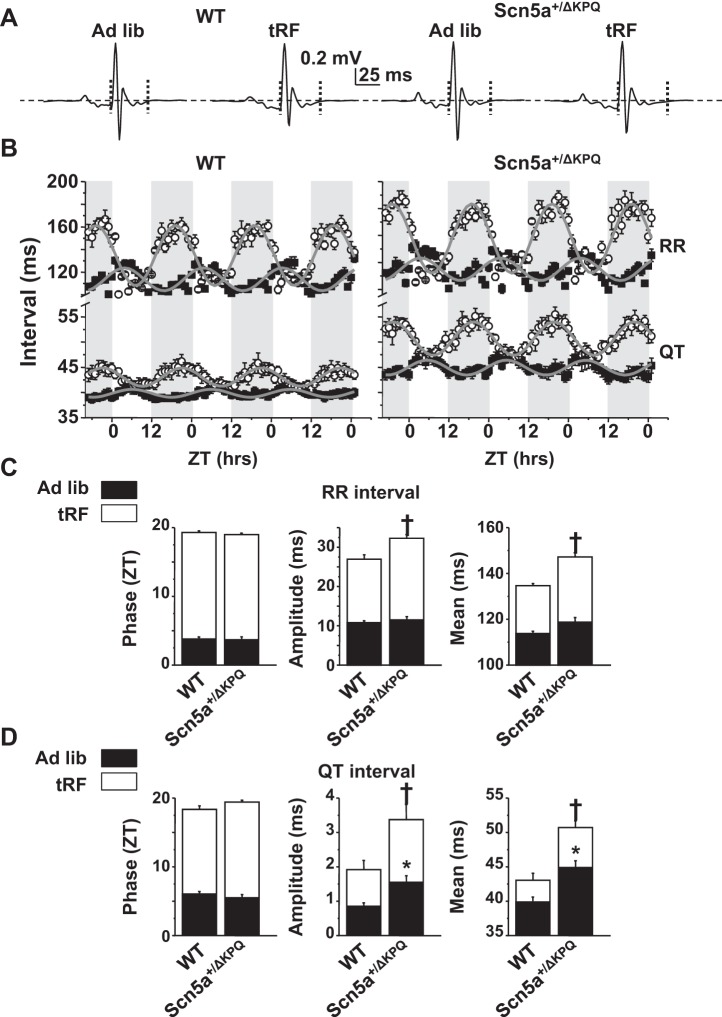Fig. 2.
Light phase-restricted feeding alters the circadian rhythm of RR and QT intervals in WT and Scn5a+/ΔKPQ mice. A: ECG traces averaged over 1 h for ad libitum-fed or tRF WT and Scn5a+/ΔKPQ mice. Horizontal dashed lines are the zero potential line, and vertical dotted lines denote the averaged trace's QT interval. B: hourly averages in the RR or QT intervals for WT (left) or Scn5a+/ΔKPQ (right) mice in ad libitum-fed (■) or after tRF conditions (○). Averages are plotted as a function of ZT over ∼3 days. Shaded regions denote the dark phases. The gray line is the sinusoidal fit to the data. C: mean phases, amplitudes, and 24-h midline means for the RR. D: QT intervals from the sinusoidal fits to the individual data from WT or Scn5a+/ΔKPQ mice in ad libitum (black bars) or after tRF conditions (white bars). Not denoted is the finding that compared with ad libitum-fed conditions, tRF conditions increased the phase, amplitude, and midline means for both WT and Scn5a+/ΔKPQ mice (n = 6 animals each, P < 0.05). Significance denoted for WT vs. Scn5a+/ΔKPQ mice in ad libitum-fed conditions (*P < 0.05) or tRF (†P < 0.05) conditions.

